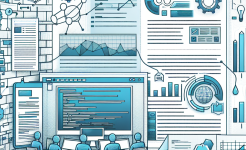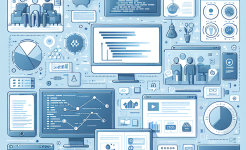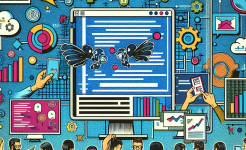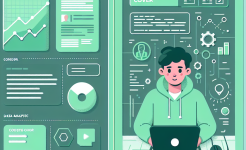Agile development and the traditional waterfall model are two prominent approaches in software development. Iterations play a crucial role in both, but they function in distinct ways. Understanding the differences between iterations in these two models is essential for project managers, developers, and stakeholders. It can help in choosing the most suitable approach for a particular project, optimizing development processes, and achieving better project outcomes.
Iterations in agile development are short, time-boxed cycles that focus on delivering incremental value. They allow for rapid feedback, continuous improvement, and adaptability to changing requirements. In contrast, the waterfall model follows a linear, sequential approach with distinct phases, and iterations are less emphasized or occur in a more limited context. By exploring the characteristics, benefits, and challenges of iterations in both models, we can gain insights into their strengths and weaknesses.
This article will delve into the comparison between iterations in agile development and the traditional waterfall model. We will examine how iterations are structured, how they handle requirements, what the development processes are like, and how they impact project management. By the end of this analysis, readers will have a clear understanding of the differences and be able to make more informed decisions regarding software development methodologies.
Iteration Structure
In agile development, iterations, often referred to as sprints, are typically short, lasting from one to four weeks. This short time frame forces the team to focus on delivering a potentially shippable product increment. Each sprint has a well-defined goal, and the team plans the work to be done within that sprint. The work is broken down into smaller tasks, and the team commits to completing them within the sprint duration. This structure promotes a sense of urgency and accountability among team members.
The iterative nature of agile allows for quick adaptation to changes. If new requirements emerge during a sprint, the team can discuss and potentially adjust the sprint backlog. This flexibility is a key advantage of agile iterations. It enables the team to respond to customer feedback promptly and incorporate new features or improvements without derailing the entire project. The continuous cycle of planning, executing, and reviewing in each sprint helps in building a product that better meets the customer's needs.
On the other hand, in the waterfall model, the structure is more rigid. The development process is divided into distinct phases such as requirements gathering, design, implementation, testing, and maintenance. Each phase must be completed before moving on to the next. Iterations in the waterfall model are not as clearly defined or frequent. If changes are needed during a particular phase, it can be difficult to go back and modify previous work without significant rework. This lack of flexibility can lead to delays and increased costs if requirements change late in the project.
Requirements Handling
Agile development's iterative approach is well-suited for handling changing requirements. Since each iteration delivers a working product increment, customers can provide feedback early and often. This feedback is then used to refine the requirements for subsequent iterations. The product backlog, a prioritized list of requirements, is constantly updated based on this feedback. This allows the team to focus on the most important features and ensure that the product evolves in line with the customer's expectations.
During each iteration, the team selects a set of requirements from the product backlog to work on. This selection is based on factors such as priority, complexity, and dependencies. By breaking the requirements into smaller chunks and delivering them incrementally, the team can manage the scope of work more effectively. This also reduces the risk of having a large number of untested or unimplemented requirements at the end of the project.
In the waterfall model, requirements are typically gathered and defined upfront in great detail. Once the requirements phase is completed, the assumption is that they will remain stable throughout the project. However, in reality, requirements often change as the project progresses. Since the waterfall model has a linear structure, accommodating these changes can be challenging. Going back to modify requirements in a previous phase may require significant rework in subsequent phases, which can be time-consuming and costly. This lack of flexibility in handling requirements can lead to a final product that does not fully meet the customer's needs.
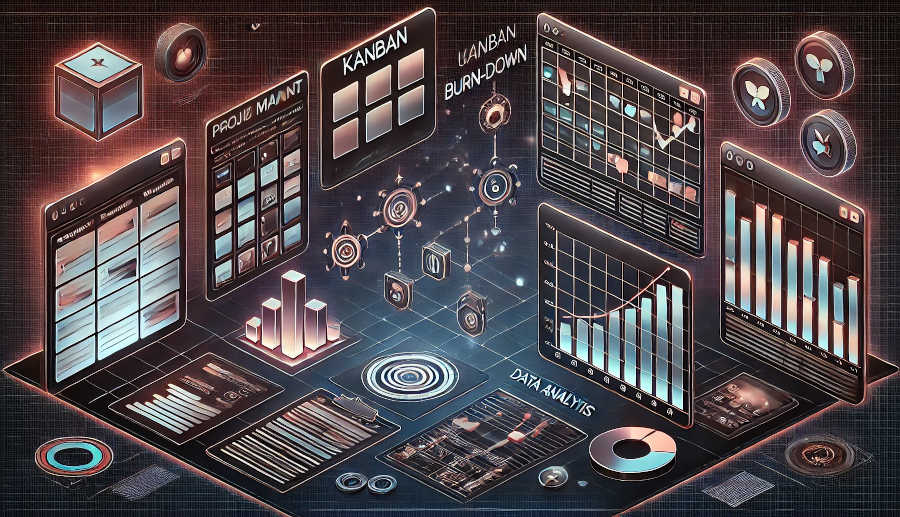
Development Process
In agile development, the development process within each iteration is highly collaborative. The cross-functional team, consisting of developers, testers, designers, and other stakeholders, works closely together. Daily stand-up meetings are held to discuss progress, issues, and plans for the day. This constant communication helps in identifying and resolving problems quickly. The team also practices pair programming, code reviews, and continuous integration to ensure the quality of the code.
Each iteration results in a potentially shippable product increment. This means that the code is tested, integrated, and ready to be deployed if needed. The focus on delivering value in each iteration encourages the team to prioritize the most important features and ensure that they are of high quality. The iterative nature of agile also allows for continuous learning and improvement. The team can reflect on each iteration and make adjustments to their processes and practices for future sprints.
In the waterfall model, the development process is more compartmentalized. Each phase is carried out by a specific group of people, and there is less interaction between different phases. For example, the requirements gathering phase is typically done by business analysts, the design phase by architects, and the implementation phase by developers. This separation can lead to communication gaps and misunderstandings. The lack of continuous integration and testing during the development process can also result in more bugs and issues being discovered late in the project, which can be difficult and expensive to fix.
Project Management
Agile project management is centered around iterations. The project manager plays a role in facilitating the sprint planning, tracking progress, and removing obstacles for the team. The use of agile metrics such as velocity (the amount of work a team can complete in a sprint) helps in estimating the project timeline and scope. The iterative nature of agile also allows for better risk management. Since the team is delivering value in each iteration, the impact of any potential risks is reduced.
The agile project management approach also emphasizes customer involvement. The customer is actively engaged in providing feedback during each iteration, which helps in ensuring that the project is on the right track. The project manager coordinates this interaction and ensures that the customer's needs are met. The flexibility of agile iterations allows for quick adjustments to the project plan based on changing circumstances.
In the waterfall model, project management is more focused on following a predefined plan. The project manager creates a detailed project schedule and budget based on the requirements and phases. Once the plan is set, it is difficult to deviate from it. Changes to the project scope or schedule can have a significant impact on the overall project. The lack of iterative feedback and the linear nature of the waterfall model make it more challenging to manage risks and adapt to changing requirements.
Conclusion
In conclusion, the differences between iterations in agile development and the traditional waterfall model are significant. Agile development's iterative approach offers numerous advantages, including flexibility, quick adaptation to changes, and continuous delivery of value. The short, time-boxed sprints allow for rapid feedback, better requirements management, and a more collaborative development process. Agile project management also aligns well with the iterative nature of the development, enabling better risk management and customer involvement.
On the other hand, the waterfall model's more rigid structure and less frequent iterations can pose challenges, especially when it comes to handling changing requirements. The linear nature of the waterfall model can lead to rework and delays if requirements change late in the project. The compartmentalized development process and lack of continuous integration and testing can also result in quality issues.
When choosing between the two models, it is important to consider the nature of the project, the stability of the requirements, and the team's capabilities. For projects with evolving requirements and a need for quick feedback, agile development with its iterative approach may be the better choice. However, for projects with well-defined and stable requirements, the waterfall model may still be a viable option. By understanding the differences between iterations in these two models, organizations can make more informed decisions and select the approach that best suits their project needs. This understanding can lead to more successful software development projects, better quality products, and increased customer satisfaction.
ARTICLE TITLE :Comparison between iterations in agile development and traditional waterfall model ,AUTHOR :ITpmlib


